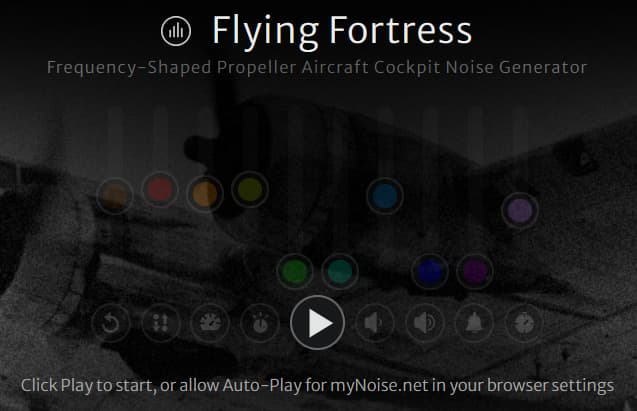Tools to succeed at remote work with ADHD
Having ADHD exacerbates all the challenges and rewards of Remote work. There is no threat of office mates coming to your desk to politely break your flow, but also no social accountability.
It has been said that All failure is systems failure. It is helpful to adopt this mindset in treating ADHD, as those with it tend to blame themselves for all their troubles, leading to a negative feedback loop. Additionally, changing one's environment is non-invasive and highly affordable compared to medication and therapy. Here are some environmental changes that have helped me.
Control the noise with brown noise and wireless earphones
I have found that I am easily distracted by noise around me. Nearby conversations and construction when I'm in the office, or barking dogs and nearby phone calls when at home.
Attempting to fix this by listening to music results in me being significantly less productive, as I find myself distracted by Liking music tracks, fussing with playlists, skipping to next track when the current track becomes slightly too uninteresting.
Attempting again to fix this by using noise cancelling headphones causes me to be distracted by the sounds of my own body - I'm suddenly able to hear my own heartbeat, very small movements, even headphone cable noise if I'm using wired headphones.
Many with ADHD have reported being able to be more productive in the dull roar of air travel[1], and I've also found this to be true. A researcher, Göran Söderlund, has done 15 studies of white noise on people with ADHD and has found people with ADHD perform better on memory and language tasks. Söderlund theorizes that in people with ADHD, listening to broadband noise somehow causes the brain to mimic the effects of dopamine.[2] It is too expensive to book a plane ticket every time you need to be productive, but using a brown noise app is free. Mynoise.net is a free web app to generate noise, with a section specifically for ADHD. I've found the B-17 flying fortress preset to suit me well, with the radio voices turned off.

As for wireless earphones and headphones, I am using Samsung Buds 2 and Sony WH-1000XM3.
Slow your impulses, prioritise in writing
ADHD makes you highly impulsive. Combined with working remotely and having only instant messages for feedback, it is easy to impulsively reply to messages all day or flip through notifications and inboxes instead of your important work.
Some people appear to be able to prioritise without writing. Ignore that thought. For you seeing your tasks in writing is key.
Write your tasks down. Slooowly split them into smaller parts. Recombine them. Fidget with your tasks. The tasks are the fidget. You can break the task down a bit more. Why is that word there? This task should definitely be lower on the list.
And so in fidgeting with your task list you should end up with a sorted list of priorities for the day.
For tools, use a task app that allows drag and drop rearranging, and reserve a part of the screen where you can always see it. I personally keep my notes and tasks always open on my laptop screen, with everything else on external monitors.
If you prefer tactility or lack a monitor you can dedicate to tasks, you could even use small post it notes. I would suggest very cheap post it notes that you can dispose of and not feel bad, so that it is mentally easier for you to throw them away if you make a mistake. Just keep a bin nearby to clean them up when they accumulate. You will occasionally forget to clean up, and that's okay.
Interrupt-proof your thoughts by writing in a journal
ADHDers have many thoughts that can feel like they have nowhere to go. Additionally, they are fragile, and a slight interruption can cause your thoughts to shatter. By writing them down, they are given a chance to endure and become something more useful.
Additionally, if you use an app for your journal, the act of typing into the app can act as a kind of stimming, particularly on a Mechanical keyboard. The resulting writing can be used for reflection, documentation, task management and many other things.
Use an outliner for super-organisation
Outliners are distinct from note taking apps by treating all writing as Bullet Points that can be infinitely nested. This suits ADHDers in a number of ways:
Outlines are highly rearrangeable. Unlike conventional Documents in word processing applications like Google Docs and Evernote and Obsidian, Outliners expect you to rearrange and reorganise your writing heavily. An outliner's bullet points can be clicked and dragged and rearranged much more easily. This suits ADHDers whose thoughts are chaotic and go into many tangents.
Outlines are focusable. On writing a chaotic chain of thought, an outliner allows the user to choose any bullet point to focus on, hiding all others.
I recommend Logseq as a privacy focused and free outliner. In the past I have used Workflowy and Dynalist, but I feel Logseq is easily superior. Tana Inc is another outliner that is highly acclaimed, but not privacy focused.
Visualise your time
Those with ADHD struggle with time blindness - increased difficulty with reasoning about time. I personally have great trouble answering questions like
- "What have you been doing lately?"
- "What have you got on for the weekend?"
One tool to help with this is a Time timer, which is somewhat like a kitchen timer, but with the option to turn off the sound, making it more friendly for quiet offices.
In addition to a calendar, one technique to help with time blindness is Time blocking.
Washington Post 2022-11-14 For some with ADHD, the low rumble of brown noise quiets the brain ↩︎
PubMed Listen to the noise: noise is beneficial for cognitive performance in ADHD ↩︎